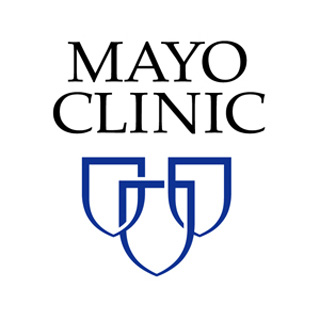Cardiac Resynchronization and Iodine Meta-Iodobenzylguanidine (MIBG) Imaging
| Status: | Recruiting |
|---|---|
| Conditions: | Cardiology |
| Therapuetic Areas: | Cardiology / Vascular Diseases |
| Healthy: | No |
| Age Range: | 18 - Any |
| Updated: | 4/2/2016 |
| Start Date: | February 2012 |
| End Date: | September 2016 |
| Contact: | Celeste Koestler, RN |
| Email: | koestler.celeste@mayo.edu |
| Phone: | 507-255-2200 |
Cardiac Resynchronization and MIBG Imaging
Congestive heart failure (CHF) affects nearly 5 million Americans and claims more than
300,000 lives annually. A primary pathophysiologic mechanism in this deadly syndrome is an
abnormally enhanced sympathetic nervous system that results in profound peripheral
vasoconstriction, attenuated cardiovascular reflexes, higher susceptibility to ventricular
arrhythmias, and sudden cardiac death. The reduction in mortality and morbidity in CHF by
pharmacologic neurohumoral antagonists such as beta-receptor inhibitor and angiotensin
II-converting enzyme (ACE) inhibitor has taught us that regulation of the impaired
neurohumoral axis is important for improving clinical outcome. In addition, an emerging
nonpharmacologic approach, cardiac resynchronization therapy (CRT), has shown promise for
improving symptoms and quality of life in patients with New York Heart Association (NYHA)
functional class III or IV and intraventricular conduction delay. However, despite
significant advances in CHF treatment in the past two decades, a gap remains between
clinical outcome and the mechanisms of the protective effects of these modern therapies.
CHF is associated with increased concentrations of circulating norepinephrine (NE),
down-regulation of adrenergic nerve terminals, and abnormal NE reuptake. The suppression of
cardiac sympathetic nerve endings could be reversed by CRT, a novel anti-heart failure
therapy, by rebalance cardiac sympathetic activity, and improve cardiac function in patients
with heart failure.
300,000 lives annually. A primary pathophysiologic mechanism in this deadly syndrome is an
abnormally enhanced sympathetic nervous system that results in profound peripheral
vasoconstriction, attenuated cardiovascular reflexes, higher susceptibility to ventricular
arrhythmias, and sudden cardiac death. The reduction in mortality and morbidity in CHF by
pharmacologic neurohumoral antagonists such as beta-receptor inhibitor and angiotensin
II-converting enzyme (ACE) inhibitor has taught us that regulation of the impaired
neurohumoral axis is important for improving clinical outcome. In addition, an emerging
nonpharmacologic approach, cardiac resynchronization therapy (CRT), has shown promise for
improving symptoms and quality of life in patients with New York Heart Association (NYHA)
functional class III or IV and intraventricular conduction delay. However, despite
significant advances in CHF treatment in the past two decades, a gap remains between
clinical outcome and the mechanisms of the protective effects of these modern therapies.
CHF is associated with increased concentrations of circulating norepinephrine (NE),
down-regulation of adrenergic nerve terminals, and abnormal NE reuptake. The suppression of
cardiac sympathetic nerve endings could be reversed by CRT, a novel anti-heart failure
therapy, by rebalance cardiac sympathetic activity, and improve cardiac function in patients
with heart failure.
The Specific Aim #1 of this study is to assess, with 123iodine metaiodobenzylguanidine
(123I-MIBG imaging), whether CRT rebalances and improves the integrity and function of
sympathetic nerve terminals in the failing myocardium. The study will test the hypothesis
that resynchronization of biventricular contractility attenuates excessive sympathetic
drive, and improves autonomic function and cardiac performance.
The Specific Aim #2 of this study is to determine the relationship between 123I-MIBG
labeling of sympathetic activity and physiological measures of cardiopulmonary and autonomic
function. This aim is to test the hypothesis that impaired cardiac sympathetic activity,
determined by 123I-MIBG imaging will be associated with poorer submaximal exercise gas
exchange (higher ventilation - CO2 slopes, low end tidal CO2, reduced oxygen pulse and a
more rapid frequency response) as well as reduced heart rate power spectral frequencies, a
blunted response to positional changes and a delayed heart rate recovery.
(123I-MIBG imaging), whether CRT rebalances and improves the integrity and function of
sympathetic nerve terminals in the failing myocardium. The study will test the hypothesis
that resynchronization of biventricular contractility attenuates excessive sympathetic
drive, and improves autonomic function and cardiac performance.
The Specific Aim #2 of this study is to determine the relationship between 123I-MIBG
labeling of sympathetic activity and physiological measures of cardiopulmonary and autonomic
function. This aim is to test the hypothesis that impaired cardiac sympathetic activity,
determined by 123I-MIBG imaging will be associated with poorer submaximal exercise gas
exchange (higher ventilation - CO2 slopes, low end tidal CO2, reduced oxygen pulse and a
more rapid frequency response) as well as reduced heart rate power spectral frequencies, a
blunted response to positional changes and a delayed heart rate recovery.
Inclusion criteria: Indications for Biv-ICD implantation
1. Chronic moderate to severe CHF (NYHA class II or IV)
2. Left ventricular ejection fraction (LVEF) of 35% or less
3. QRS duration of 120 ms or more
4. On optimized anti-heart failure medical regimen
5. Meet one of the following indications for ICD
- Survivors of cardiac arrest due to ventricular fibrillation (VF) or ventricular
tachycardia (VT) or spontaneous sustained VT
- Nonsustained VT with coronary disease, prior myocardial infarction, LVEF 35% or
less, and inducible VF or sustained VT at electrophysiologic study
- LVEF of 30% or less with severe coronary artery disease
Exclusion criteria:
1. Patient condition is unstable
2. Patient is unable to give informed consent
3. Not feasible for patient to be followed at Mayo Clinic
4. Female in pregnancy and breast feeding
We found this trial at
1
site
Mayo Clinic Rochester Mayo Clinic is a nonprofit worldwide leader in medical care, research and...
Click here to add this to my saved trials
